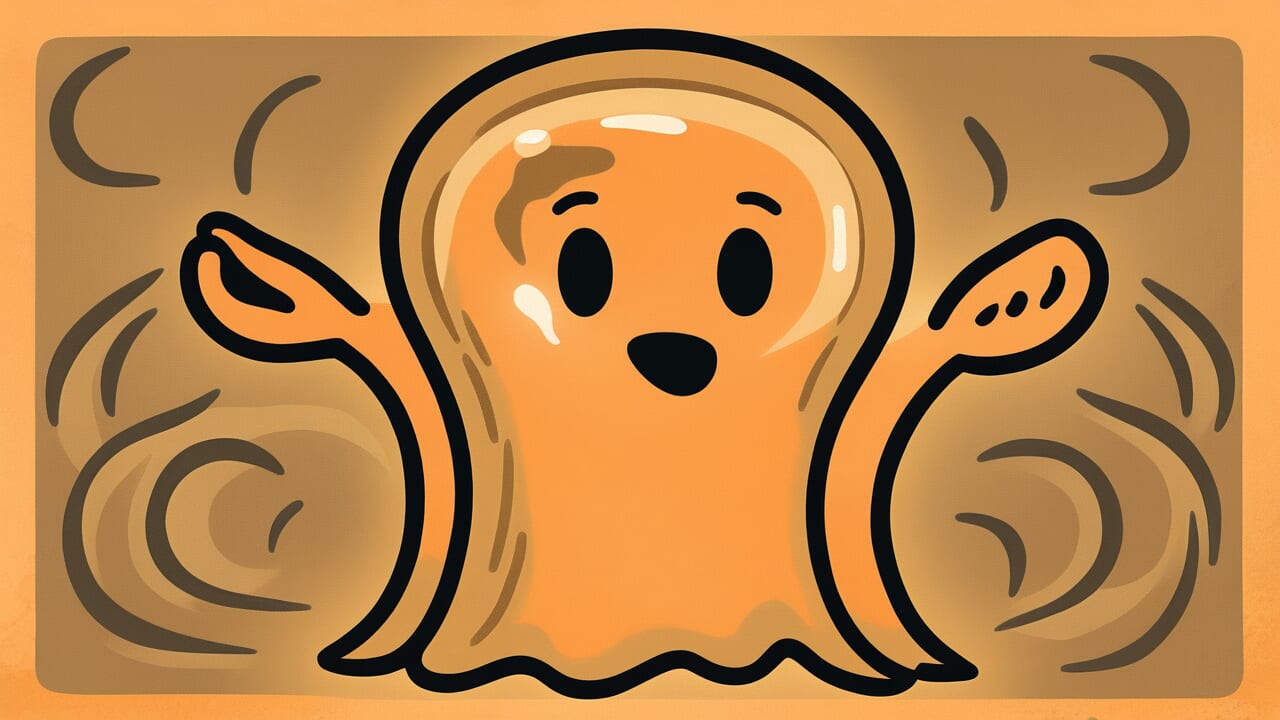How to Read “A ghost made of konjac”
Konnyaku no yūrei
Meaning of “A ghost made of konjac”
“A ghost made of konjac” refers to something unreliable and powerless. It describes things that lack substance and cannot frighten anyone.
Ghosts are supposed to be scary beings. But if a ghost were wobbly and transparent like konjac, it wouldn’t be intimidating at all.
This expression describes situations that look like something significant but actually have no power or influence.
For example, it applies to people who talk big but never follow through. It fits warnings that sound threatening but scare nobody. It describes plans that look organized but lack real content.
The combination of “ghost,” a frightening word, and “konjac,” a soft and unreliable food, emphasizes this powerlessness. Even today, this expression perfectly captures empty bravado and ineffective threats.
Origin and Etymology
The exact origin of this proverb isn’t clearly documented. However, it likely emerged from common culture during the Edo period.
Konjac is transparent, soft, and shapeless, as you may know. Meanwhile, ghosts are supposed to be terrifying beings in ghost stories.
But what if a ghost were translucent and wobbly like konjac? It would be unsteady on its feet. Instead of scaring people, it would seem helpless.
This expression probably came from the playful spirit of Edo period commoners. Back then, ghosts were established as frightening figures in ghost stories and theater.
By combining the scary ghost with wobbly konjac, people created a humorous contrast. The opposite images worked together perfectly.
Things that should have power or dignity but actually have no substance or reliability are captured brilliantly by this strange combination.
The phrase sounds amusing too. It shows the wordplay talent of Edo people.
Interesting Facts
Konjac has long been called “sand remover” or “stomach broom” in Japan. People valued it as a food that cleans the body.
However, it has almost no nutritional value. About 97 percent is water. This characteristic of “having appearance but almost no substance” may be one reason it was chosen for this metaphor.
In Edo period ghost stories, ghosts were typically drawn without feet. The lack of feet emphasized their eerie floating quality.
But “a ghost made of konjac” lacks even that floating presence. It just wobbles helplessly. In a way, it represents the ultimate powerless existence.
Usage Examples
- That company’s new business is like a ghost made of konjac. They advertise flashily, but nothing is actually progressing.
- The manager’s scolding is a ghost made of konjac. Nobody takes it seriously.
Universal Wisdom
The proverb “a ghost made of konjac” brilliantly captures a universal phenomenon in human society. It shows the gap between appearance and substance.
People have always tried to appear dignified without having real ability. Why is this?
Because many situations in society value form and appearance over substance. Humans know from experience that looking the part can move people temporarily, even without real power.
However, this proverb has been passed down because it also shows another truth. Pretense will eventually be exposed.
A ghost made of konjac might be recognized as a ghost at first. But once its true nature becomes clear, nobody fears it anymore. False bravado doesn’t last.
What’s interesting is that this proverb doesn’t just criticize. It also contains pity and humor.
A ghost made of konjac isn’t scary or hateful. It’s just helpless. People may feel sympathy when they see someone without ability desperately trying to maintain dignity.
This is because anyone could potentially become a ghost made of konjac themselves.
When AI Hears This
Konjac is about 97% water with nearly zero calories. It physically exists but nutritionally is “as good as nothing.” This is a strange food indeed.
What happens when this becomes a ghost? Ghosts already symbolize things without substance. So something with little substance loses even more substance. This creates a double negation.
This structure is fascinating because it targets how our brains judge “existence” in three layers. The first layer is physical form. The second is function or influence. The third is how it remains in memory or impression.
Konjac only passes the first layer and is weak in the second. When it becomes a ghost, it loses even the first layer. It becomes complete zero.
In mathematical terms, it’s like 0.1 × 0.1 = 0.01. When you multiply small values together, they approach zero infinitely.
Actually, cognitive science shows that humans understand “things lacking everything” more easily than “things lacking something.” Halfway existence confuses the brain’s classification system.
A ghost made of konjac is ultimately unreliable because this halfway quality is squared. It completely slips out of our cognitive framework.
Lessons for Today
This proverb teaches modern people about “the emptiness of appearance without substance.” With social media today, anyone can make flashy announcements easily.
But what truly matters is whether your words and actions have real substance behind them.
Look at yourself honestly. Do you say big things but never actually take action? Do you focus only on appearances while forgetting to develop real content?
To avoid becoming a ghost made of konjac, you need to build real ability steadily. You need to take responsibility for your words.
At the same time, this proverb helps you see others clearly. Don’t be fooled by flashy advertising or intimidating attitudes. Develop the ability to judge real substance.
Things with real power don’t need to make themselves look bigger than they are.
Living a life with substance takes time. It may look plain and unglamorous.
But that steady accumulation is what makes you into something real.



Comments